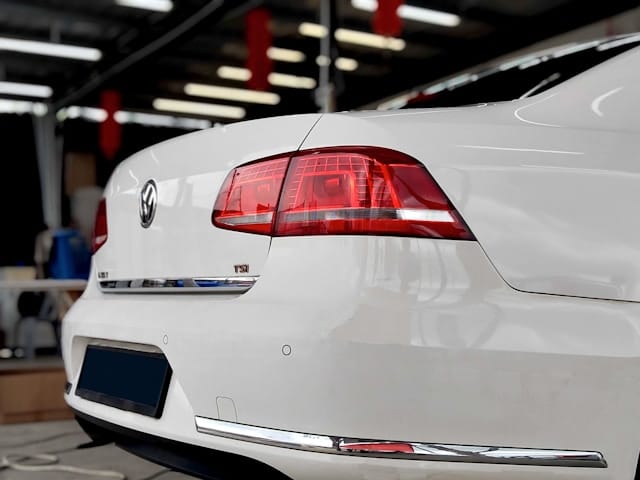The Pros and Cons of Aftermarket Bumpers
 Choosing the right bumper after an accident isn’t just about restoring your vehicle’s look—it’s about balancing cost, quality, safety, and style.
Choosing the right bumper after an accident isn’t just about restoring your vehicle’s look—it’s about balancing cost, quality, safety, and style.
At Chaney’s Collision Centers, we get a lot of questions about aftermarket bumpers and how they compare to original equipment manufacturer (OEM) options. Here’s a detailed look at the real advantages and disadvantages of going aftermarket, helping you make the most informed repair decision for your car.
What Are Aftermarket Bumpers?
Aftermarket bumpers are produced by third-party manufacturers rather than your vehicle’s original maker. They’re widely available and come in an array of designs, from simple replacements to rugged, off-road styles and custom finishes.
Pros of Aftermarket Bumpers
- Affordability: The biggest draw of aftermarket bumpers is price. Generally, they are significantly cheaper than OEM bumpers, helping many drivers keep repair costs down—especially when insurance won’t foot the full bill.
- Variety and Customization: Aftermarket suppliers offer a huge range of styles, materials, and finishes. Whether you want a sportier look, enhanced off-road capability, or personalized details like winch mounts or grille guards, aftermarket options excel at customization.
- Availability and Convenience: It’s usually much faster and easier to find aftermarket bumpers, especially if your car is older or if the OEM part is on backorder or discontinued. There’s less waiting for shipments or extensive dealer searches.
- Potential for Enhanced Features: Many aftermarket bumpers are designed to offer features not available from the factory, like reinforced construction for off-road use or improved approach angles for trucks and SUVs.
Cons of Aftermarket Bumpers
- Fitment Issues: Since aftermarket bumpers aren’t built exactly to your car’s specs, there’s a higher chance you’ll encounter alignment problems or gaps—sometimes requiring extra time, adjustments, or even bodywork to fit correctly.
- Quality Concerns: Aftermarket bumpers can vary widely in quality. Some use cheaper materials or less precise manufacturing methods, resulting in lower durability or a less polished final appearance. Not all aftermarket parts meet the same safety and impact-absorbing standards as OEM bumpers, which could compromise protection in a future collision.
- Paint and Finish Challenges: It can be more difficult to achieve a seamless paint match on some aftermarket bumpers, leading to noticeable color differences or longevity issues with the finish if the materials aren’t top-quality.
- Warranty and Certification: Many aftermarket bumpers don’t include a manufacturer’s warranty, leaving you responsible if there’s a defect or premature wear. There may also be complications if insurance companies require certified or specifically branded parts for certain repairs.
When Is an Aftermarket Bumper a Good Choice?
- For older vehicles or non-luxury models where budget is a primary concern
- When you want to personalize your car’s aesthetics or add features
- If OEM parts are backordered, discontinued, or prohibitively expensive
When to Consider OEM Instead
- If exact fit, finish, and maintained resale value are essential
- For newer vehicles with integrated sensors or advanced safety systems
- When your insurance prefers or requires factory-certified components
The Chaney’s Collision Centers Approach
At Chaney’s Collision Centers, we help you weigh all these factors—budgets, aesthetics, safety, and insurance guidelines. Our expert team sources only high-quality parts, whether you choose OEM or aftermarket, and we guarantee a precise installation for complete peace of mind.
Conclusion
Aftermarket bumpers can offer big savings and personalization, but they do come with occasional trade-offs in fit, finish, and quality. When debating your options, consider what matters most to you and consult with trusted repair experts. At Chaney’s, we help you find the right match—so your vehicle looks good and stays safe, mile after mile.

